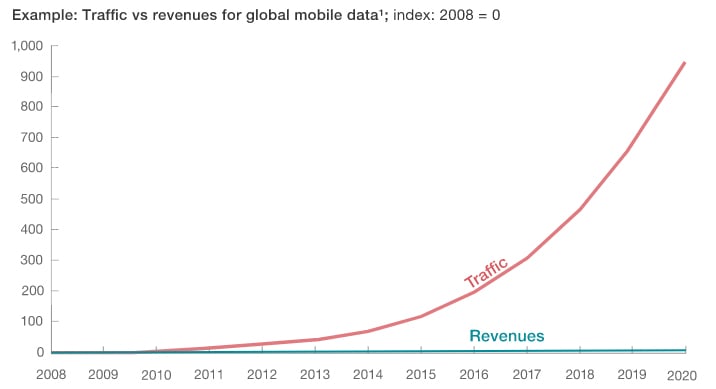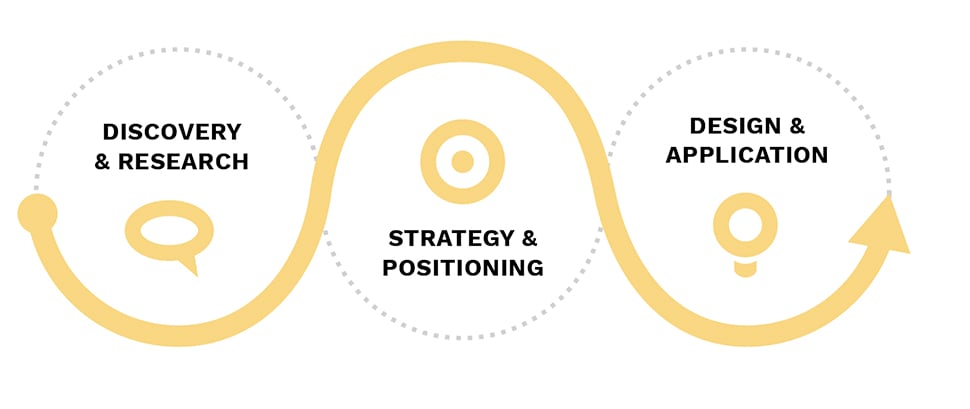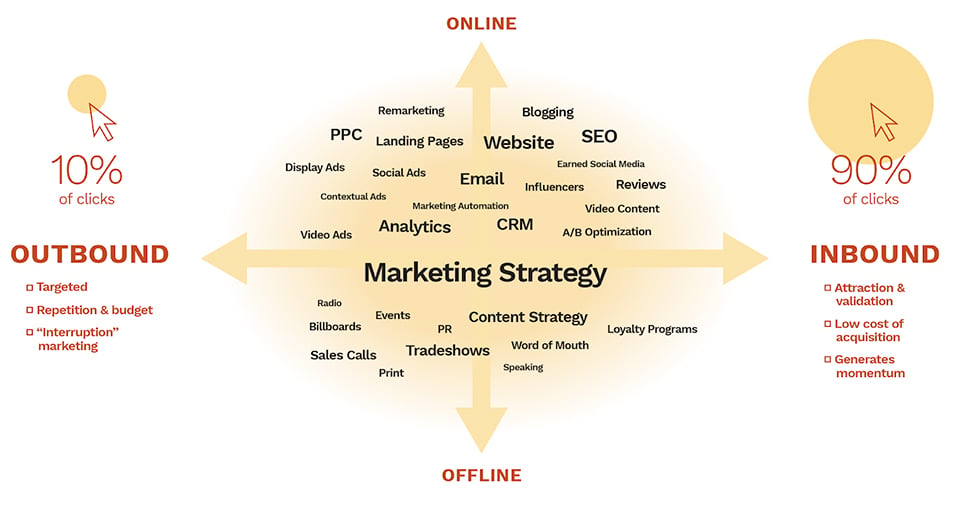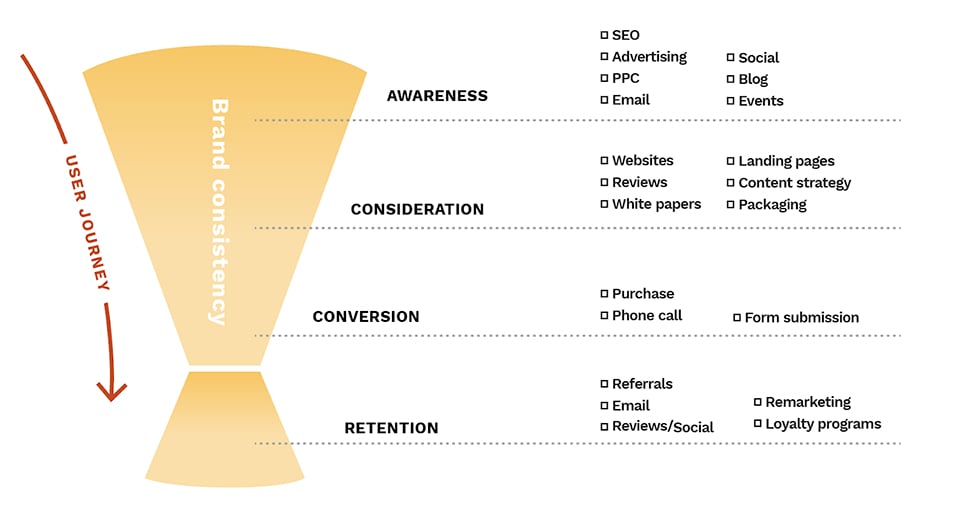Building B2B Brands that Inspire Customer Loyalty

When we think of “brand loyalty,” we often think of it in terms of consumer goods and services - B2C. That’s for good reason: 82% of U.S. adults report being loyal to a product brand.
But some of those same brand-biased consumers are also decision makers in a B2B context.
That’s why marketing guru Neil Patel says that B2B buyers actually want to be brand loyal. It makes their decisions to purchase (or not purchase) from a brand that much easier and faster.
Unfortunately, the ubiquitousness of brand loyalty in the B2C space doesn’t seem to carry over into the B2B world. This graph from McKinsey clearly shows that there hasn’t been a proportional rise in revenues with the explosive growth of web traffic over the past ten years.

What can we gather from this not-very-surprising data? Your buyers are actively researching your competitors!
In fact, by the time they make contact with someone on your team, buyers have already spent an average of 65 days researching your company and your competitors.
B2B brand loyalty today
The current state of B2B brand loyalty is….kind of grim. According to Gallup research, only about half of B2B customers are confident in their vendors’ ability to deliver on their promise or are proud to be that company’s customer.
Another study found that 71% of B2B customers take actions that indicate they’re at risk of taking their business elsewhere and only 29% feel “fully engaged” with their vendor teams.
This is particularly problematic given the fact that loyal customers are more likely to refer your business to others. Your customers simply aren’t going to spread the word about your business if they don’t feel engaged with your brand.
Benefits of a strong B2B brand
Your brand is more than what someone sees on your website, reads on a search engine results page (SERP), or hears from a salesperson. Your brand defines what people can expect out of their experience with your company.
The Harvard Business Review did a great job defining the benefits of a strong brand, some of which are listed below. Each of these points can and should be utilized to make a business case for optimizing your brand.
Strong B2B brands:
- Address customer concerns at scale
- Prevent disjointed marketing and unclear messaging
- Justify higher prices (and, therefore, increase margins)
- Build loyalty within your existing customer base
- Protect against competition
From the customer’s perspective, though, strong brands simply make your buyers’ lives easier.
This understanding of brand equity as a decision making tool is the underlying concept behind IBM’s iconic “Nobody ever got fired for buying IBM” campaign. IBM had built a brand on the tenants of reliability and performance, and buyers could trust that deciding to purchase from IBM wouldn’t put their job at risk.
So how do you create a brand that instills trust in your prospects like IBM did?
Building a Strong B2B Brand
Exceptional B2B brands are built by maximizing the impact of every single customer touchpoint. To fully understand what your stakeholders are expecting out of all of those touchpoints, start infusing elements of your business plan into your branding plan.
The process for brand development should begin with a “Discovery” phase, during which time you build an understanding of your customers, your competitors, your industry, and your company.

You can then use those insights to form a strategy and a positioning statement that highlights your differentiators. From there, you can interpret your brand in terms of how it will be communicated online, offline, and everywhere in between.
There are three strategic components of a strong brand:
- Your brand promise: Who are you for, and what will you do for those people that is unique? Who are you not for, and why?
- Your brand positioning: How will you communicate your brand promise, and what differentiates it from your competitors?
- Your brand performance: How will you deliver on your brand promise, and what will constitute the success of your brand?
To find the answers these questions, ask your customers:
- How have we made your lives easier?
- Who else have you considered, and why did you choose us?
- How would you describe our team?
Then, ask your team members questions such as:
- Who are our most valuable customers?
- What value do we offer that no other company does?
- How are we communicating with prospects?
- How are our competitors communicating with prospects?
Defining your brand in these terms is a foolproof way of making sure your product or service is backed by a solid brand and the brand is reinforced by the effectiveness of your services.
Driving Brand Engagement
When you define a marketing strategy, there are dozens of different tactics and channels that you can leverage to inspire action.

The list of channels you use, how you use them, and how often can be defined as “the marketing mix.” This should be rooted in an understanding of how your customers, your competitors’ customers, and buyers you aspire to make your customers make decisions.
One distinction to make when determining the marketing mix is between outbound marketing (which might include cold emails, TV or radio ads, and direct mail) and inbound marketing, which attracts relevant audiences, adds value, and validates choices.
Inbound marketing draws customers in and solves their problems with content marketing, social media marketing, search engine optimization, and more.
As evidenced in the graphic shown above, inbound has become a best practice for companies across the industry spectrum because it gets results: 90% of clicks online are generated via inbound marketing versus just 10% from outbound tactics.
To sum up the relationship between brand and marketing, let’s examine the connection between strategy and execution:

You’ll notice, when arranged in terms of the sales funnel, that there several different tactics affiliated with each purchase stage. Each of these channels create touchpoints with your buyers.
The story of these mutually-reinforcing touchpoints is what we would call your buyer’s journey.
The sum of these mutually-reinforcing touchpoints is your brand.
The sum and the story of your buyer’s experiences with your brand should be carefully crafted to motivate action, whether it be encouraging someone to consume more of your content, to seek validation from third-party review sites, to contact someone on your team, or to refer your business to a friend.
Creating a cohesive experience for your buyers means managing dozens, if not hundreds of different touchpoints - both online and off. But when they’re created in support of a well-defined brand, shaping the B2B customer experience becomes easier.
Do you have a defined brand strategy? Is it in line with your overall business strategy? If not, it may be time to get back to brand basics.




